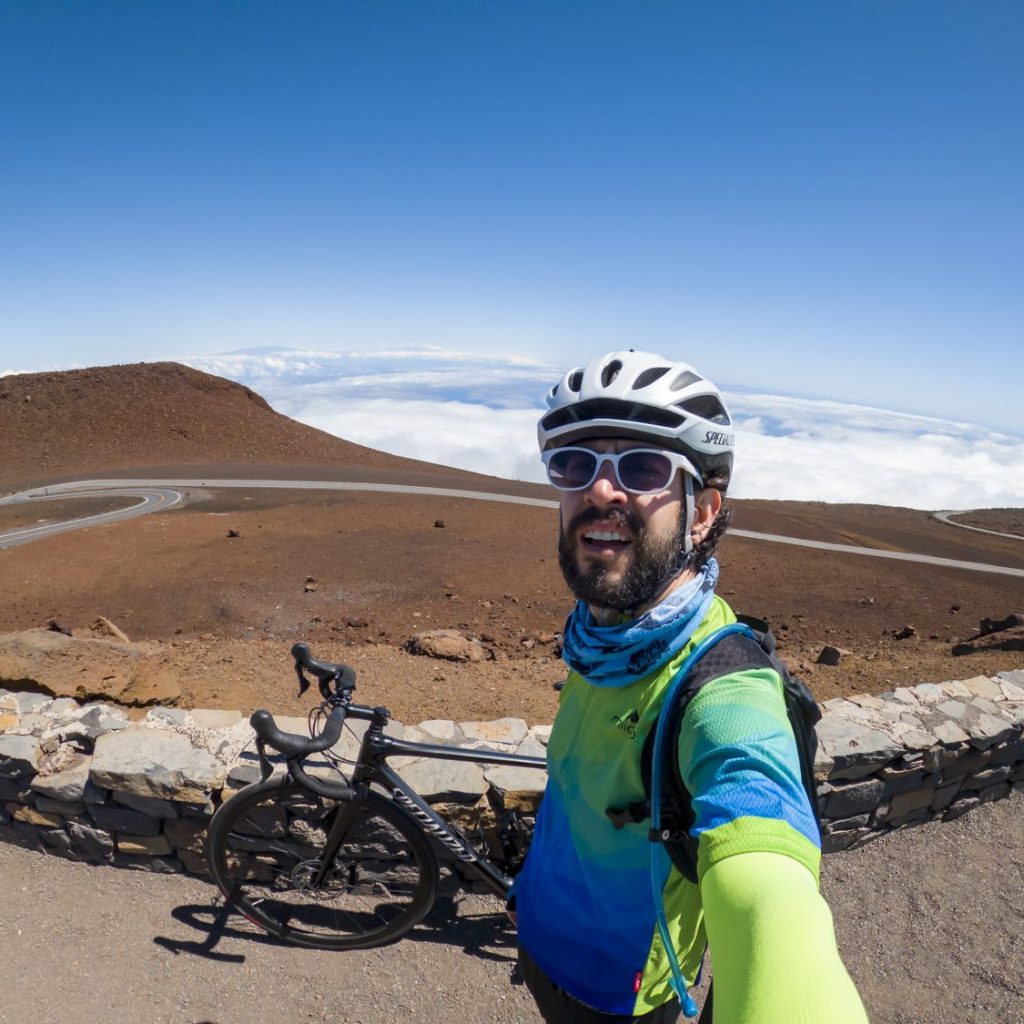Climbing Haleakala Volcano by Bicycle (Maui, Hawai’i)
I’m not sure when or where I first heard about climbing Haleakala Volcano by bicycle. But when I did, I knew that I wanted to go to Maui do it.
Ranked the second-hardest climb in the US (after Mauna Kea, Hawai’i), the route starts from sea level in Pa’ia and takes you 36 miles and 10,331 feet up to the crater summit at a 5.3% average grade.


I biked to the start and then home from the summit, clocking a total of 75 miles and 10,528 ft of elevation gain over the 7-hour bike ride. (See Strava Ride statistics below.)
It was definitely a bucket-list challenge for me and I hope to do other big climbs like this in the future. Although it was a really long climb, the moderate and steady gradient made it an attainable goal. The steepest half-mile, at 9%, is the last stretch to the summit. Unsurprisingly, this stretch, in addition to all of the climb over 7,500 ft, was the hardest. The reduced oxygen at that elevation left me struggling.
As expected, the views from Haleakala were stunning the whole way. I got a beautiful weather day and clouds only started moving in as I got to the higher elevation. Cycling into the clouds is just as cool as enjoying the views.
Cycling at a slow pace through the different elevation zones was interesting. There was tropical vegetation near sea level and then around 4,000 feet, I reached some big eucalyptus groves. Beyond that were pines, and eventually, above the treeline, it was only shrubs and plants. The summit and crater comprise shades of reddish-brown volcanic rocks, almost lunar in appearance.
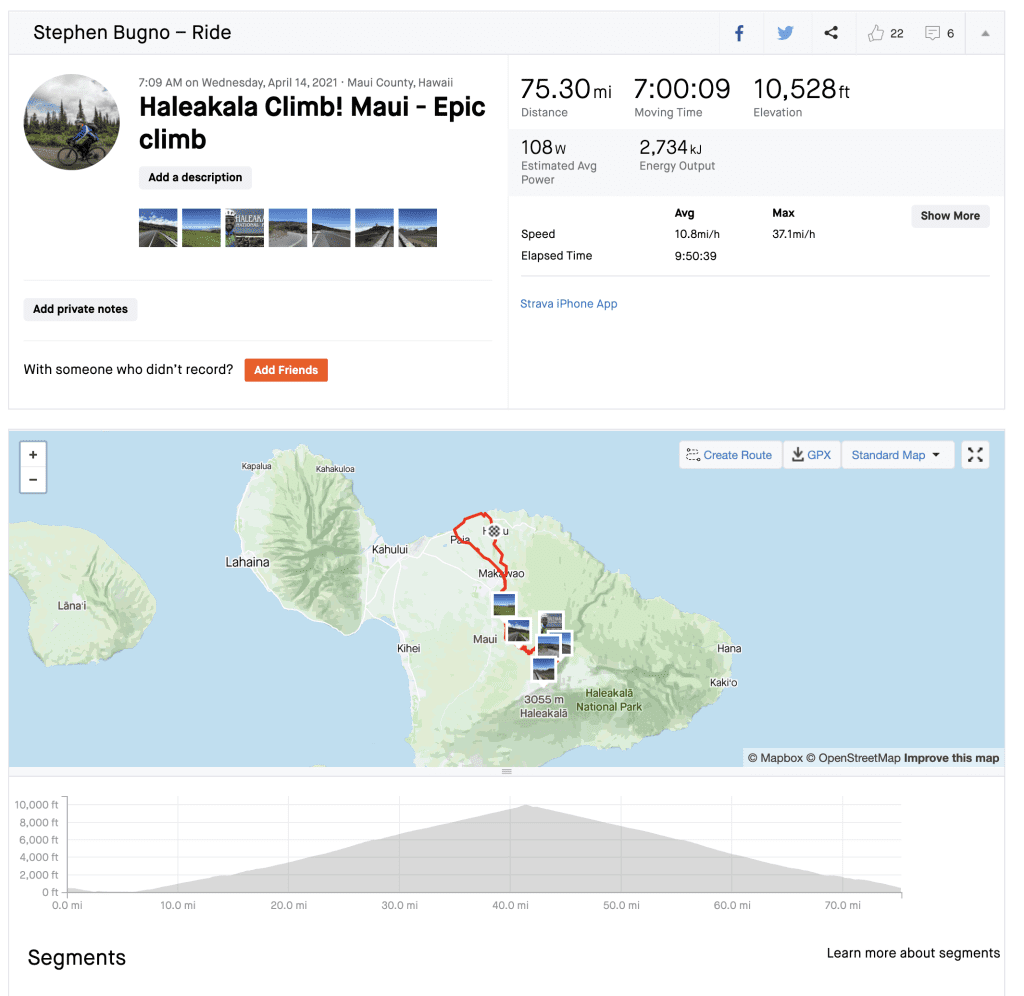
The southern portion of Haleakala National Park actually stretches to the ocean, so this floral diversity is reflective of the variety of climates and elevations that allowed plants to fill niches from dry alpine deserts to humid, salt-sprayed coastlines. Over 850 species of plants are found within the bounds of the park. Of these, over 400 species are native or arrived without human intervention. Over 300 species are endemic to Hawai’i, found only here.
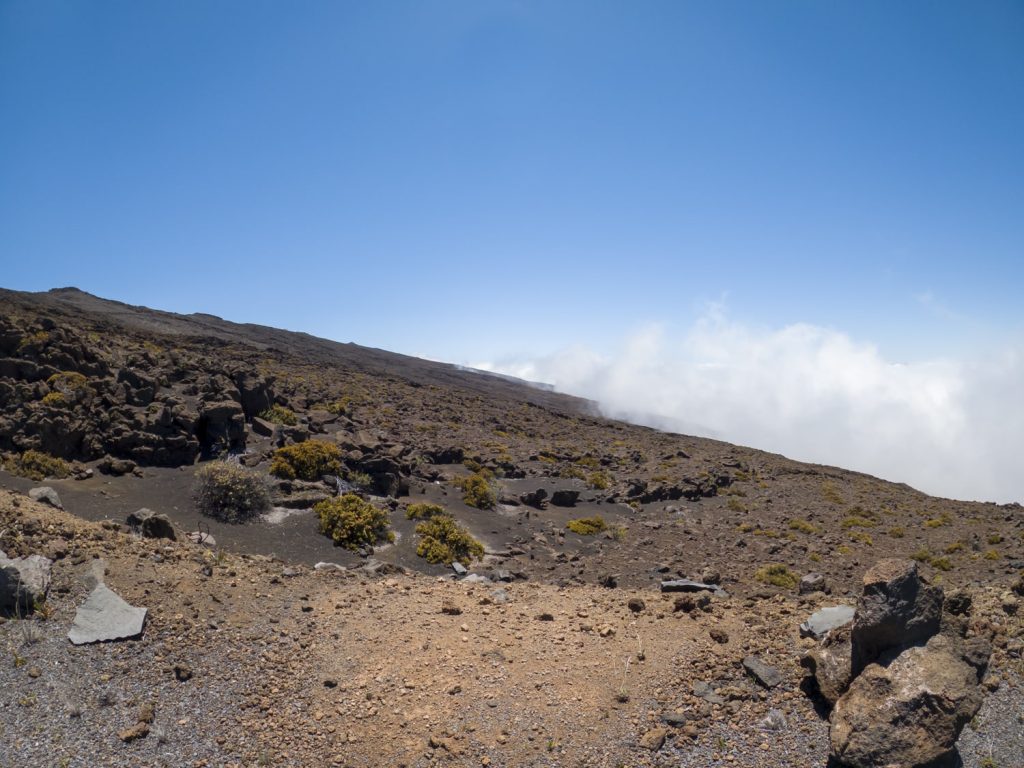
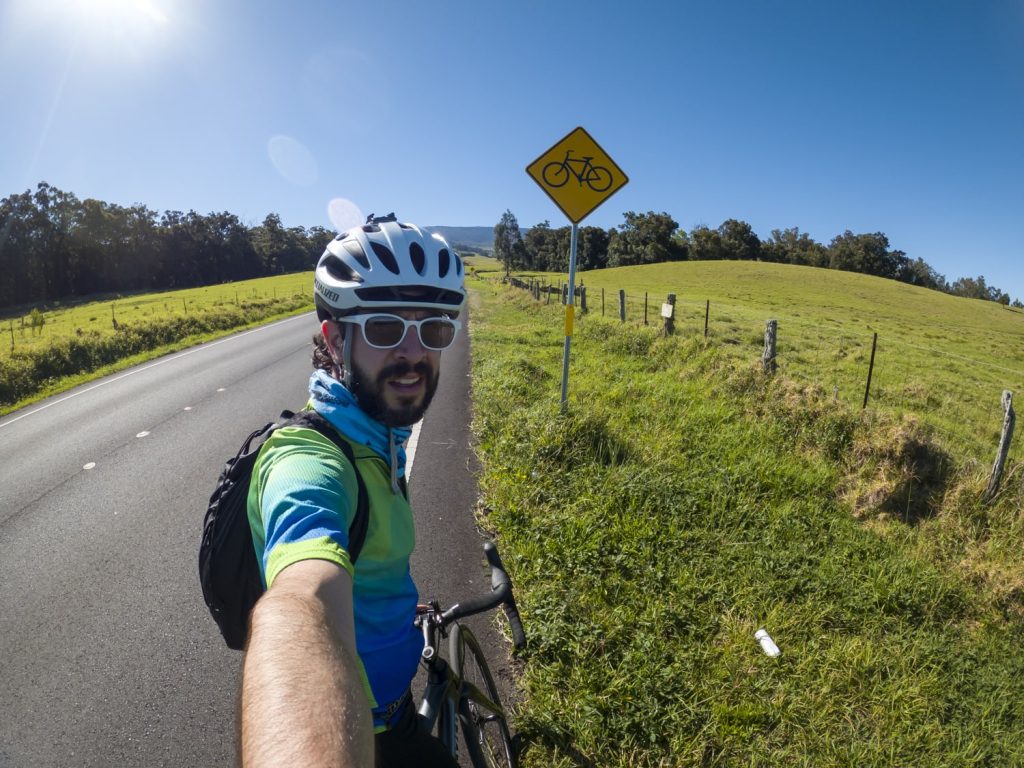
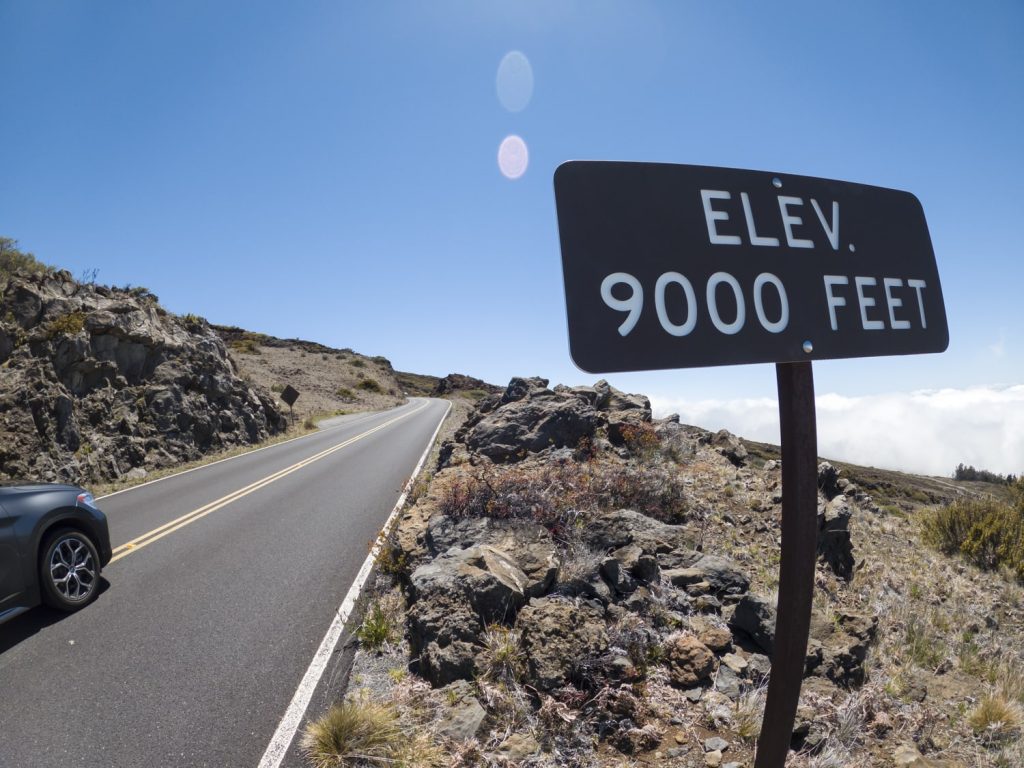
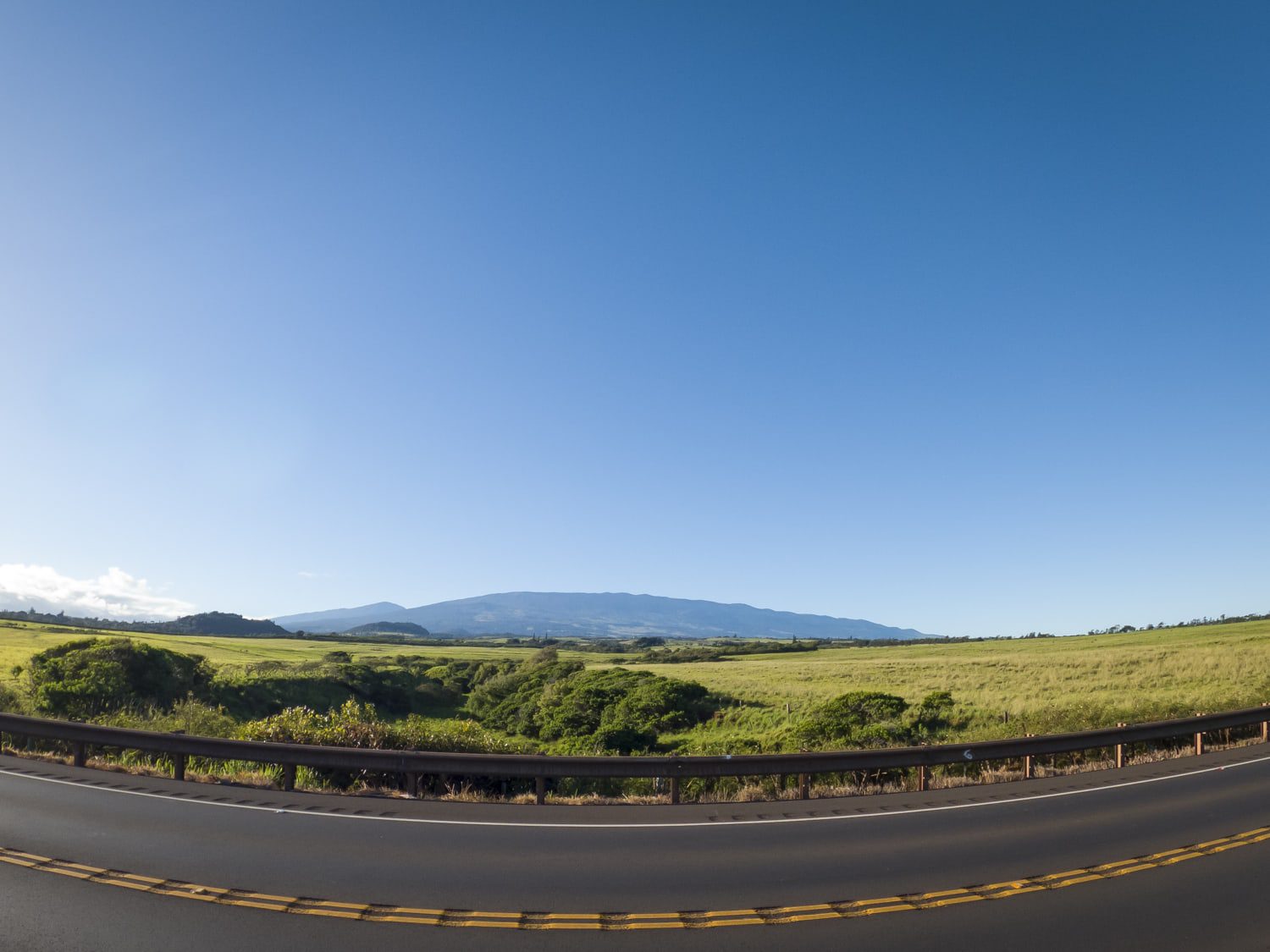
Traveling to Maui
This was our first time on Maui. There are direct flights from Alaska, so it’s a shorter and less-expensive flight than from most other destinations. This was our first time traveling out of state after the pandemic had begun and we had all our negative tests in order before our flight.
We rented out a one-room cottage in the village of Haiku and rented a car for a week. Later in the week, after I returned my rental bike, Juno and I drove to the top of Haleakala. The crater of this shield volcano is part of Haleakala National Park and we hiked for a couple of hours down into the crater: a massive depression some 11.25 km (7 mi) across, 3.2 km (2 mi) wide, and nearly 800 m (2,600 ft) deep.
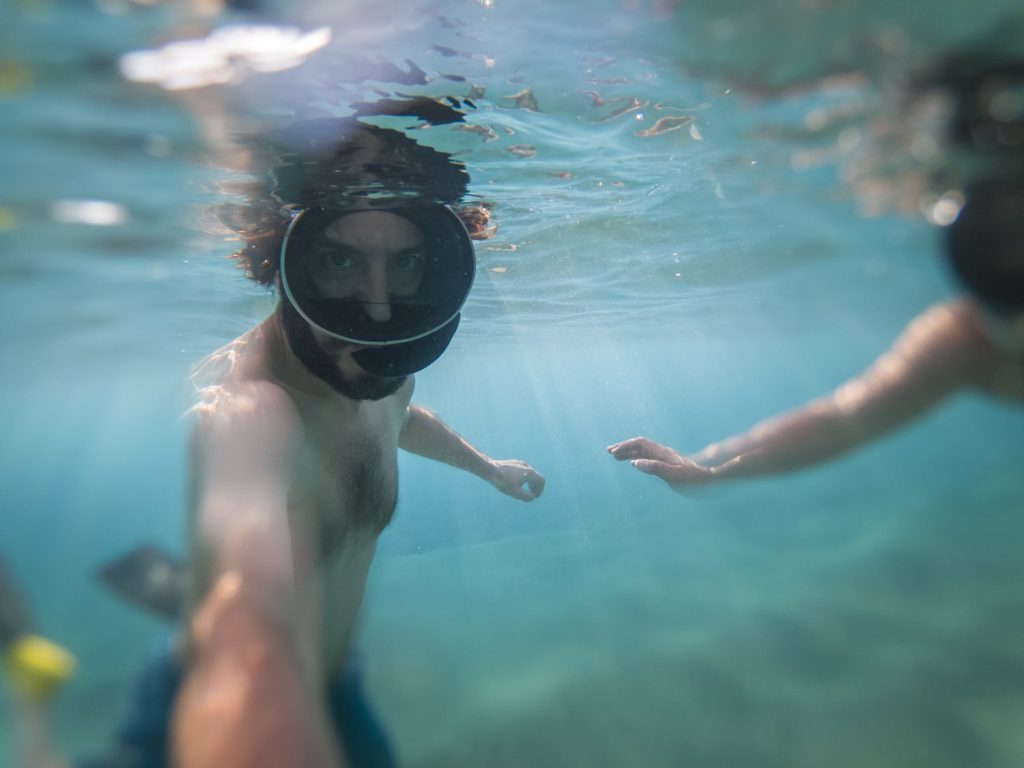


The surrounding crater walls are steep and the interior is rocky and barren-looking with a scattering of volcanic cones. Definitely not your typical hike.
Another day we drove out the famous Hana Highway and completed the loop of East Maui, something we probably shouldn’t have done in our rental Chevy Camaro. The far southeastern portion of Maui is remote and the road is narrow, unpaved, and crumbling.
West Maui is more populated but equally beautiful. We drove that loop, too but I would have preferred to do it on my bike. The road was super narrow and it was nerve-racking having to contend with oncoming traffic and blind curves. But the views were splendid and the snorkeling in Honolua Bay alone was worth the trip.
